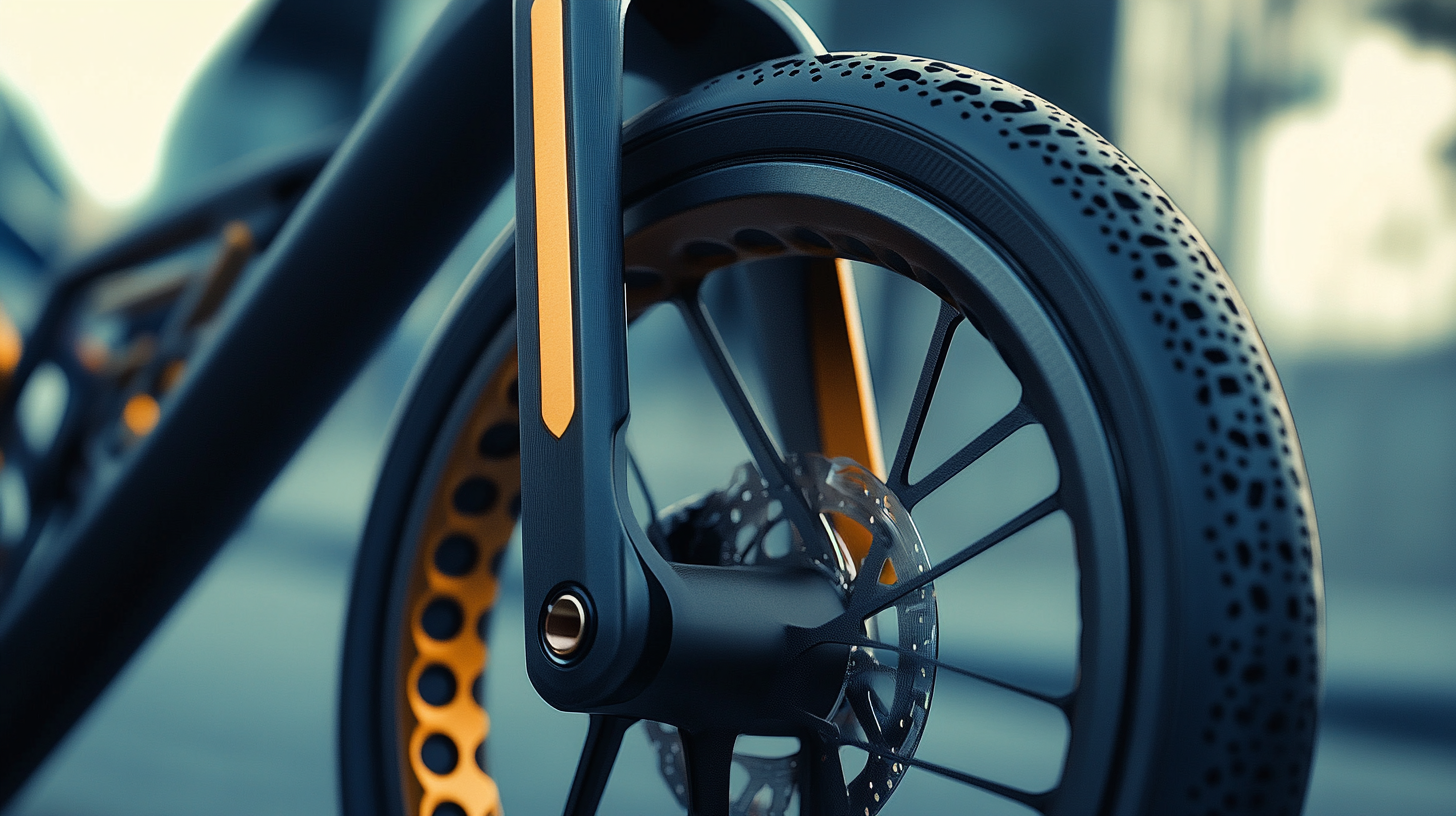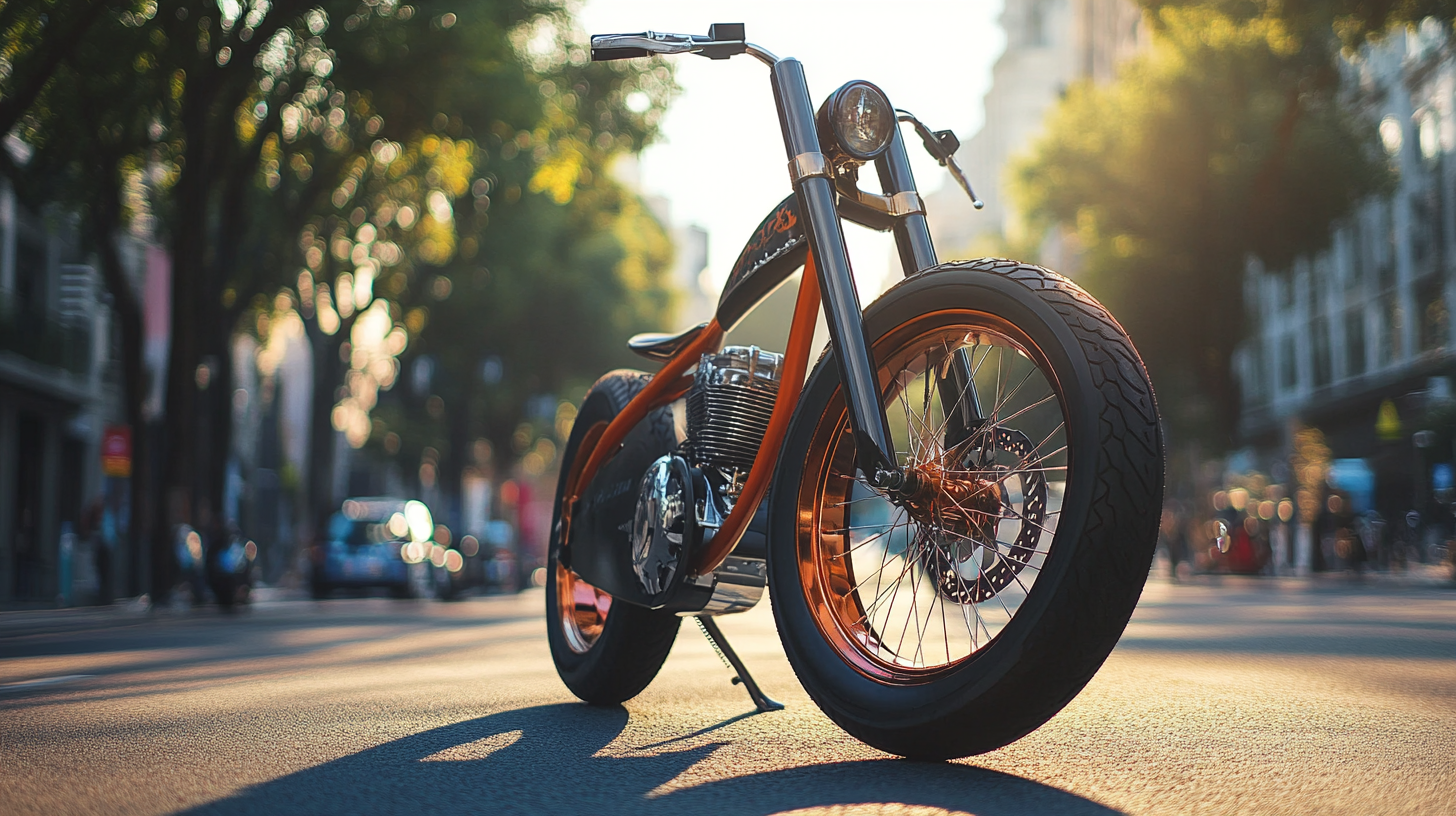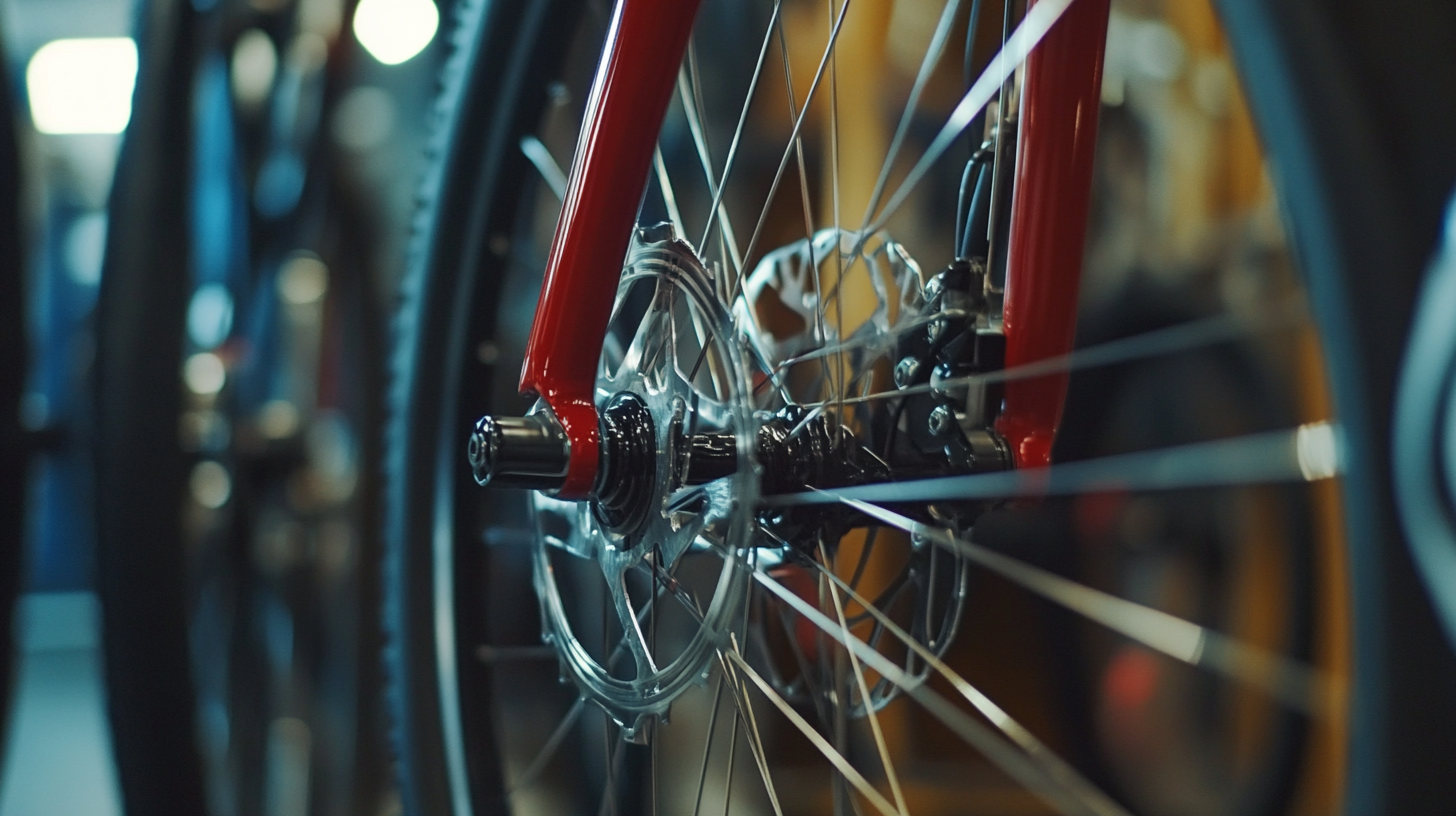In the ever-evolving world of cycling, enthusiasts are continually on the lookout for innovative ways to enhance their riding experience. One area that has seen tremendous creativity and development is in the design of bicycle chopper forks. These specialized forks not only contribute to the aesthetic appeal of a bike but also play a crucial role in its performance and handling. As cyclists seek to make a statement on the road, the rise of bicycle chopper forks has introduced unique designs that combine style with functionality, paving the way for a new era of custom cycling.
From classic retro styles to modern, streamlined looks, bicycle chopper forks provide riders with the opportunity to personalize their bikes like never before. In this blog, we will explore the various innovative options available, including unique materials, innovative shapes, and customization techniques that can elevate your cycling experience. Whether you are a seasoned cyclist or a novice looking to make your mark, understanding the potential of bicycle chopper forks can transform not just your bike's performance but also the joy you derive from every ride.

When it comes to bicycle chopper forks, the choice of materials plays a crucial role in enhancing both performance and durability. Traditional steel forks have long been the standard, but with advancements in technology, new materials are paving the way for lighter, stronger, and more resilient designs. For instance, the use of carbon fiber and aluminum alloys in fork construction offers manufacturers the ability to create products that are not only robust but also significantly lighter, improving overall ride quality. These materials are resistant to corrosion and can withstand the stresses of various terrains, making them ideal for adventurous cyclists. Moreover, innovative design approaches in fork geometry can impact handling and control. By utilizing advanced computational methods, designers can optimize the frame and fork angles, resulting in improved stability and maneuverability while riding. This is especially important for choppers, where style and performance must go hand in hand. The modern cyclist seeks a balance between aesthetic appeal and functionality, and the right materials play an essential role in achieving that equilibrium. In addition, integrating shock-absorbing elements into the fork design can further enhance the cycling experience. Advanced composite materials can help mitigate vibrations and impacts, allowing for a smoother ride even on rough surfaces. As these innovations continue to evolve, cyclists can look forward to experiencing a new level of performance and enjoyment from their bikes, proving that the future of bicycle chopper forks is bright with potential.

In the world of high-performance cycling, fork geometry plays a pivotal role in a bike's handling and stability, making it a crucial factor for cyclists looking to elevate their riding experience. Recent discussions highlight the differences in fork offset between various bike types, notably the 52mm offset favored by downhill bikes and the 44mm standard used in enduro bikes. This variance is not mere coincidence; it directly influences how a bike corners and responds to rider inputs, ultimately enhancing performance in distinct riding conditions.
The interplay between wheelbase, stem length, and fork offset significantly alters a bike's characteristics. For gravel bikes, for instance, a longer wheelbase combined with an appropriate fork offset can improve stability over rough terrains while allowing for sharper handling when needed. These adjustments enable cyclers to tackle challenging paths with greater confidence and control. Understanding these relationships can guide cyclists in optimizing their choice of bicycle, ensuring that they select models that align with their specific riding style and preferences.
Moreover, advancements in fork design and geometry continue to enhance the capabilities of modern mountain bikes. Models like the Santa Cruz Hightower 4 exemplify how strategic engineering can create a stable yet agile ride, particularly on technical descents. With each evolution in design, the chopper forks of today not only influence aesthetic appeal but also redefine performance standards, allowing cyclists to push their limits and enjoy a more exhilarating experience on the trails.

When it comes to enhancing the cycling experience, understanding the role of suspension systems in chopper bikes can significantly impact both comfort and control. Suspension systems are critical for absorbing shocks from rough terrains, providing a smoother ride that minimizes fatigue during long journeys. Recent industry reports indicate that bikes equipped with advanced suspension technology can reduce rider impact by as much as 30%, making them a preferred option for both casual riders and enthusiasts.
Chopper bikes, often characterized by their extended front forks and low-slung chassis, benefit immensely from well-designed suspension systems. These systems allow for better handling and stability, especially at higher speeds. As riders navigate through varying terrains or urban environments, the ability of the suspension to adapt plays a crucial role in enhancing overall ride quality. Studies suggest that bikes with optimized suspension can achieve a significant reduction in road vibrations, leading to a more enjoyable cycling experience.
Furthermore, the emerging trend towards electric bicycles and hybrids is prompting manufacturers to innovate in suspension technology. The integration of lightweight materials and hydraulic systems not only enhances performance but also caters to the growing demand for comfort in biking. By investing in these innovative solutions, manufacturers are enriching the cycling experience for a broader audience, ensuring that both functionality and enjoyment remain at the forefront of bike design.

In the pursuit of a faster, more efficient ride, cyclists are increasingly turning to innovative design options for bicycle chopper forks. By integrating aerodynamics into the fork's structure, manufacturers can significantly enhance speed while maintaining stability and comfort. The principles of aerodynamics—essentially the study of how air interacts with solid objects—are being applied creatively in the development of new chopper fork designs, pushing the boundaries of what cyclists can expect from their bikes.
One key innovation involves the shaping of the fork legs to minimize drag. Traditional forks often create turbulence that can slow a rider down, but by streamlining the design, manufacturers can reduce wind resistance. This reduction in drag leads to enhanced speed, allowing cyclists to achieve their personal bests with less effort. Additionally, better aerodynamic performance can result in improved fuel efficiency for racers, making these chopper forks an attractive option for competitive cyclists as well as leisurely riders seeking a more enjoyable experience.
Another exciting development in this area is the use of advanced materials and construction techniques. Lightweight composites not only enhance the aerodynamic properties of the forks but also contribute to improved handling and stability. As cyclists navigate varying terrains, an aerodynamic fork that remains lightweight allows for snappier response and better maneuverability. Ultimately, the integration of aerodynamics into chopper forks is not just about speed; it’s about rethinking the entire cycling experience and making it more enjoyable and efficient.
As modern cyclists seek a more enhanced experience, the demand for innovative bicycle fork designs has surged. Research indicates that around 52% of cyclists prioritize performance and comfort when selecting bicycle components. This trend emphasizes the importance of advanced materials and ergonomic designs in fork manufacturing. Cyclists are advocating for options that not only provide structural integrity but also enhance the overall ride quality. Contemporary forks with adjustable mechanisms and lightweight materials are becoming increasingly popular, allowing riders to customize their setups for various terrains.
Consumer preferences are evolving alongside technological advancements in the cycling industry. A recent survey revealed that 63% of cyclists are interested in smart features, such as integrated sensors that track performance metrics. Innovations similar to the AI-powered controls found in new electric assist bicycles reflect this trend. The integration of smart technology can significantly elevate the user experience by providing real-time feedback and adjustable settings based on individual riding styles.
Moreover, aesthetics play a critical role in consumer choices. Recent data suggests that nearly 45% of cyclists are influenced by the aesthetic design of their bike components, including forks. This has led to an increasing number of companies exploring unique shapes and finishes to attract design-conscious cyclists. These developments indicate that the future of bicycle forks not only rests on functionality but also on a harmonious blend of form and technology to cater to the diverse preferences of today’s riders.
